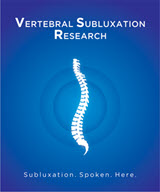Vaginal Births and the Reduced Likelihood of Type 1 Diabetes in Children

In recent years, there has been a growing body of research that underscores the significance of the biological processes occurring during vaginal birth. This research has been particularly centered on how these processes can potentially reduce the likelihood of the onset of type 1 diabetes in children.
Hormone Surges During Natural Birth
During vaginal birth, a dynamic interplay of hormones takes place, facilitating not only the birth process but also gearing the newborn’s immune system for a healthier start. The core hormones involved include oxytocin, endorphins, and adrenaline, among others.
Facilitating A Strong Immune System
The Gut Microbiome Connection
One of the pathways through which vaginal birth can reduce the likelihood of type 1 diabetes is through the gut microbiome. When a child is born through vaginal delivery, they are exposed to beneficial bacteria from the mother, which colonize their gut, aiding in the development of a robust immune system.
Hormonal Signaling and Immune Regulation
The hormone surges that occur during vaginal birth have been posited to foster a more robust immune regulatory system. The hormonal interplay works harmoniously, guiding the immune system to respond effectively to pathogens while averting autoimmunity, which is a significant factor in the development of type 1 diabetes.
Developing Resilience Against Type 1 Diabetes
A healthy immune system developed through natural birth hormonal surges can offer a shield against various diseases, including type 1 diabetes. Let's explore how:
Enhanced Beta-cell Function
It is hypothesized that the natural birth process might foster a milieu that supports the optimal function of beta cells in the pancreas, the cells responsible for insulin production. A well-regulated insulin response system in the early stage can reduce the risk of type 1 diabetes, characterized by autoimmune destruction of beta cells.
Reduced Inflammatory Responses
The hormone surges during vaginal birth can potentially guide the development of a balanced immune system, which is less prone to inflammatory responses, a precursor to autoimmune diseases including type 1 diabetes.
Looking at the Bigger Picture
While the hormone surges during vaginal birth present a compelling case for the reduced likelihood of type 1 diabetes, it is essential to acknowledge the multifaceted nature of this phenomenon. The interplay of genetic, environmental, and lifestyle factors all play a substantial role in determining the risk of developing type 1 diabetes.
Conclusion
The journey through the birth canal introduces a newborn to a series of hormonal surges, a complex but natural mechanism that might confer protection against type 1 diabetes. Though we are at the frontiers of understanding the full scope of these protective mechanisms, it is undeniable that the interplay of hormones during vaginal birth has significant implications for a child’s long-term health, including a reduced risk of type 1 diabetes.
As we unravel the intricacies of the natural birth process, it paves the way for a more comprehensive approach to safeguarding future generations against autoimmune diseases. The call of the hour is for more research to deepen our understanding and offer substantiated guidance to expecting families and healthcare providers. Let us embrace the harmonious rhythm of nature that affords a rich beginning, promising a healthier future for our offspring.

Research News
- The 19th International Research and Philosophy Symposium (IRAPS): Bridging Philosophy, Science, and Practice in Chiropractic
- New Study Uncovers the Broad Systemic Benefits of Chiropractic Care on Nervous, Endocrine, and Immune Systems
- The Hidden Power of the Spine: How Vertebral Subluxation Impacts Health Through Systems Biology
- New Study Sheds Light on Vertebral Subluxation and Systems Biology
- Understanding Cervical Spine Movement and Motor Vehicle Accidents













